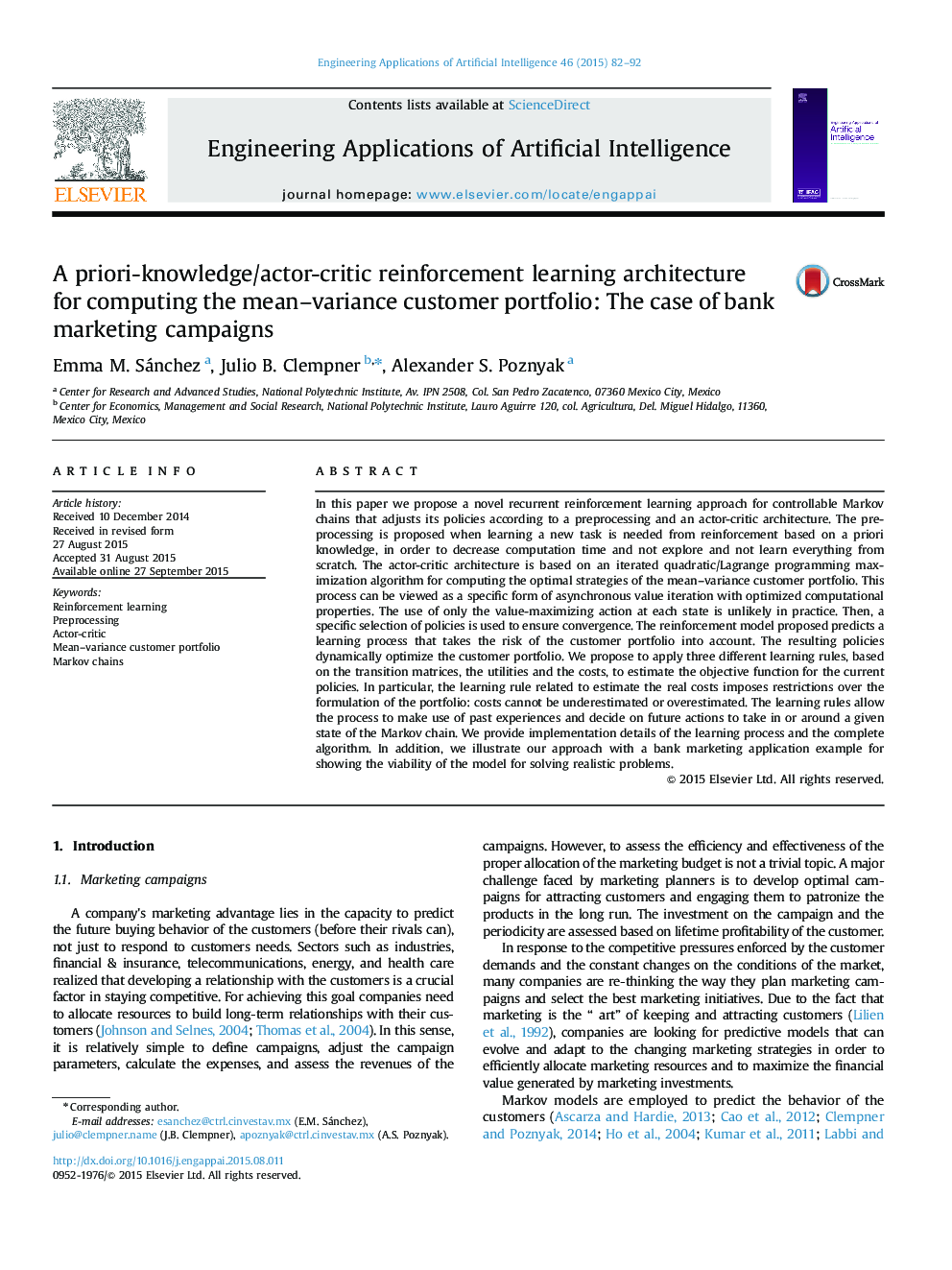| Article ID | Journal | Published Year | Pages | File Type |
|---|---|---|---|---|
| 380262 | Engineering Applications of Artificial Intelligence | 2015 | 11 Pages |
•We propose a reinforcement learning approach for controllable Markov chains•It considers a priori knowledge (preprocessing) and an actor critic architecture•In sync preprocessing and actor-critic architecture reduce the estimation time•We provide the details needed to implement the algorithm•The method effectiveness is proved by a simulated marketing campaign for a bank
In this paper we propose a novel recurrent reinforcement learning approach for controllable Markov chains that adjusts its policies according to a preprocessing and an actor-critic architecture. The preprocessing is proposed when learning a new task is needed from reinforcement based on a priori knowledge, in order to decrease computation time and not explore and not learn everything from scratch. The actor-critic architecture is based on an iterated quadratic/Lagrange programming maximization algorithm for computing the optimal strategies of the mean–variance customer portfolio. This process can be viewed as a specific form of asynchronous value iteration with optimized computational properties. The use of only the value-maximizing action at each state is unlikely in practice. Then, a specific selection of policies is used to ensure convergence. The reinforcement model proposed predicts a learning process that takes the risk of the customer portfolio into account. The resulting policies dynamically optimize the customer portfolio. We propose to apply three different learning rules, based on the transition matrices, the utilities and the costs, to estimate the objective function for the current policies. In particular, the learning rule related to estimate the real costs imposes restrictions over the formulation of the portfolio: costs cannot be underestimated or overestimated. The learning rules allow the process to make use of past experiences and decide on future actions to take in or around a given state of the Markov chain. We provide implementation details of the learning process and the complete algorithm. In addition, we illustrate our approach with a bank marketing application example for showing the viability of the model for solving realistic problems.
